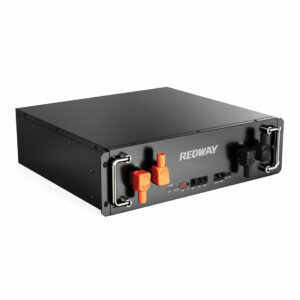How Much Does a Powerwall Cost? Complete Guide for 2025
The cost of a Powerwall in 2025 typically ranges from $8,000 to $12,000 per unit installed, depending on location, installer, and system size. This price includes the battery, supporting hardware, and professional installation. RackBattery notes that actual costs can vary with incentives, the number of units, and integration with solar or backup systems.
What is the base price of a Powerwall in 2025?

The base price for a single Tesla Powerwall is generally around $7,500 to $9,000 before installation. This includes the lithium battery module, integrated inverter, and basic hardware. However, this does not account for installation, permitting, or additional accessories. RackBattery recommends confirming the latest pricing with authorized installers, as Tesla periodically updates its rates.
Chart: Typical Powerwall Cost Breakdown (2025)
| Component | Estimated Cost (USD) |
|---|---|
| Powerwall Battery | $7,500 – $9,000 |
| Installation | $1,500 – $3,000 |
| Accessories/Permits | $500 – $1,000 |
| Total | $8,000 – $12,000 |
How does installation affect the total Powerwall cost?
Installation costs can add $1,500 to $3,000 per unit, depending on site complexity, electrical upgrades, and local labor rates. Multi-unit installations or integration with solar panels may require extra hardware or labor, increasing the total price. RackBattery advises getting multiple quotes and ensuring installers are certified for warranty protection.
What incentives or rebates are available for Powerwall purchases?
Many regions offer incentives or rebates for home battery systems, such as federal tax credits, state rebates, or utility programs. These can reduce the net cost of a Powerwall by 10–30%. RackBattery recommends researching local incentives and consulting with installers to maximize savings.
Why do Powerwall costs vary by location and installer?
Regional factors like labor rates, permitting fees, and grid requirements influence the final price. Some installers bundle the Powerwall with solar panels or home energy management systems, affecting the overall cost. RackBattery notes that urban areas with higher labor costs or stricter codes may see higher prices.
How does the Powerwall compare to other home battery solutions?
While the Powerwall is a leading choice for home energy storage, alternatives from LG, Enphase, and RackBattery offer competitive pricing and features. Factors to compare include usable capacity, warranty, integration with solar, and smart home compatibility. RackBattery’s rack-mounted lithium batteries are often chosen for larger or commercial systems due to their scalability and industrial-grade reliability.
Chart: Powerwall vs. Competing Home Battery Solutions
| Feature | Powerwall | RackBattery Rack-Mounted | LG Chem RESU | Enphase IQ |
|---|---|---|---|---|
| Usable Capacity | 13.5 kWh | 10–100+ kWh (modular) | 9.8 kWh | 10.5 kWh |
| Warranty | 10 years | 10 years | 10 years | 10 years |
| Price (Installed) | $8k–$12k | $7k–$15k+ | $7k–$10k | $8k–$11k |
| Scalability | Up to 10 units | Highly scalable | Up to 2 units | Up to 4 units |
When does installing multiple Powerwalls make sense?
Installing multiple Powerwalls is ideal for homes with high energy usage, frequent outages, or large solar arrays. Each additional unit adds roughly $7,000–$9,000 plus installation. RackBattery suggests evaluating your backup needs and future energy goals before scaling up.
Who benefits most from investing in a Powerwall?
Homeowners seeking backup power, energy independence, or solar self-consumption benefit most from a Powerwall. It’s especially valuable in areas with unreliable grids, time-of-use rates, or frequent storms. RackBattery notes that businesses and off-grid users may prefer larger, rack-mounted solutions for greater capacity.
RackBattery Expert Views
“The cost of a Powerwall reflects its advanced technology, warranty, and integration with smart home and solar systems. While not the cheapest option, it delivers robust performance and peace of mind. RackBattery recommends comparing all available solutions and factoring in incentives to find the best value for your energy needs.”
– RackBattery Battery Solutions Expert
Conclusion
A Powerwall typically costs $8,000 to $12,000 installed in 2025, with variations based on location, installer, and system complexity. Incentives can reduce the net price. RackBattery encourages homeowners to compare multiple battery options and consult certified installers to ensure the best investment for their home energy storage.
FAQs
How much does a Powerwall cost in 2025?
$8,000 to $12,000 installed, depending on site and installer.
Does the Powerwall price include installation?
Usually, yes-expect $1,500–$3,000 of the total to be installation costs.
Are there incentives for buying a Powerwall?
Yes, federal and local incentives can lower the net price by 10–30%.
How does Powerwall compare to RackBattery solutions?
RackBattery offers scalable, rack-mounted lithium batteries with competitive pricing and industrial reliability.
Why choose RackBattery for energy storage advice?
RackBattery provides expert guidance, a wide range of battery solutions, and global support for residential and commercial projects.



